#totoaba
Text
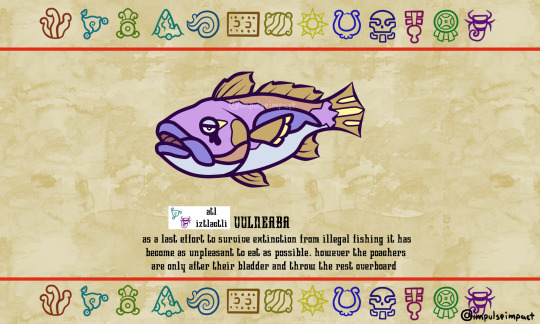
vulneaba
based on totoaba fish, the largest of the gulf of california reaching 2 meters in length, a species that has become rare as its threatened by illegal fishing, being caught and sold on mass for its swim bladder which is mainly sold in china as a delicacy and as pseudo-medicine for skin problems and fertility. totoabas are actually the second victims of this market which first focused on the now critically endangered chinese bahaba.
the illegal fishing and poaching of totoaba is also at fault for the endangerment of other species of its ecosystem, most notably the vaquita

[source1] [source2]
7 notes
·
View notes
Link
The illicit fishing of the totoaba, funded by China and for the Chinese people (again and again and again, and I’m not ashamed or embarrassed about that opinion) is also the cause of the near extinction of the vaquita in the Gulf of California, between mainland Mexico and the Baja. So when the Chinese business interests, i.e., thieves and crooks and international felons, along with their Mexican drug cartel partners, hire local Mexican fisherman, who need money to feed their families and live their lives, they are killing two endangered species. Nice.......two for the price of one.
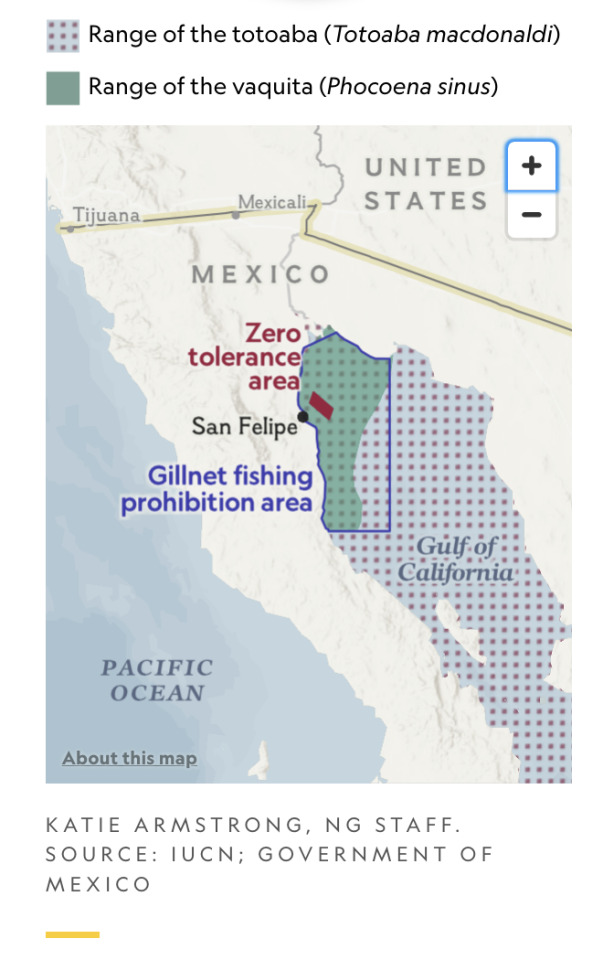
Excerpt from this National Geographic story:
We’ve come into the desert in search of fish. Dead ones. The rank, briny smell slamming my olfactory receptors suggests we must be getting close. Photographer Kirsten Luce and I move toward the stench.
We’re at an isolated, unofficial trash dump surrounded by everything from tires and toilets to plastic bottles and electronic equipment. The blue water of the Gulf of California shimmers at our backs as the fisherman who agreed to bring us here scans the detritus.
“There! That’s totoaba,” he says, pointing to a large mound. Amid the trash, more than a dozen huge, rotting fish carcasses spill out from a flowered bed sheet. Shiny silver scales cover some of the bodies; other remains are nothing more than heads and fins.
More totoaba carcasses lie nearby. The fisherman points to a slit along one body where he says totoabaeros, totoaba poachers, had extracted the animal’s swim bladder. When filled with air, the organ—known also as maw or buche—helps maintain buoyancy. But the bladders are prized in China and other Asian countries, where they’re served in soup for supposed medicinal properties, such as nourishing the liver and kidneys, improving the skin, and enhancing blood circulation. They’re sold by weight—one kilogram, roughly two pounds, may sell for as much as $100,000, according to some reports.
Found only in the Gulf of California, totoaba are the biggest in a family of fish known as croakers—so named because of the sound they can make when air whooshes in and out of that swim bladder. They can live into their mid-20s, weigh up to 300 pounds, and grow to more than six feet.
Mexico classifies totoaba as endangered and in 1975 made it illegal to catch them. Two years later, totoaba also became the first fish prohibited from global trade under CITES, the treaty that regulates international wildlife sales. And in 1979, the United States, once a major consumer of totoaba meat, added them to its endangered species list, making it illegal to take, possess, transport, or sell the fish.
As demand for totoaba maw has soared in China, Mexican drug cartels muscled into the business, according to Clare Perry, a wildlife trade policy expert with the London-based Environmental Investigation Agency.
As demand for totoaba maw has soared in China, Mexican drug cartels muscled into the business, according to Clare Perry, a wildlife trade policy expert with the London-based Environmental Investigation Agency.
Mexico’s history of totoaba protections is inextricably linked to measures to save the vaquita, a critically endangered porpoise also found nowhere else but the Gulf of California. Scientists estimate that no more than 10 vaquita survive today. Gillnets of various mesh sizes—especially the large ones used to catch totoaba—are their most pressing threat.
4 notes
·
View notes
Text
Mexico, conservation group boost efforts to save tiny vaquita porpoise | Reuters
0 notes
Text
Jessie Volt and Aida Sweet anal FFM
Redhead emo girl gives footjob blowjob combo with oral creampie
Naughty Tgirl Jessica Fox fucks Sophias trimmed pussy
Sissy crossdresser Machine Gagging
tapa na bunda
School girl dancing naked
Thick Ebony Booty Compilation
Amazing teen blowjob provided in the locker room by horny babe Baby Nicols
Collage girl
sexy brunette girl fucked cum feet
#cinchonidia#psephisma#unliveableness#louboutin#maul#totoaba#Angadresma#consciousness-expansion#adarbitrium#ROW#imperialist#beauty's#kraaling#omnifariously#taintlessly#slacker#Nestorianize#tpk#pantheonize#deliverly
0 notes
Text
0 notes
Text
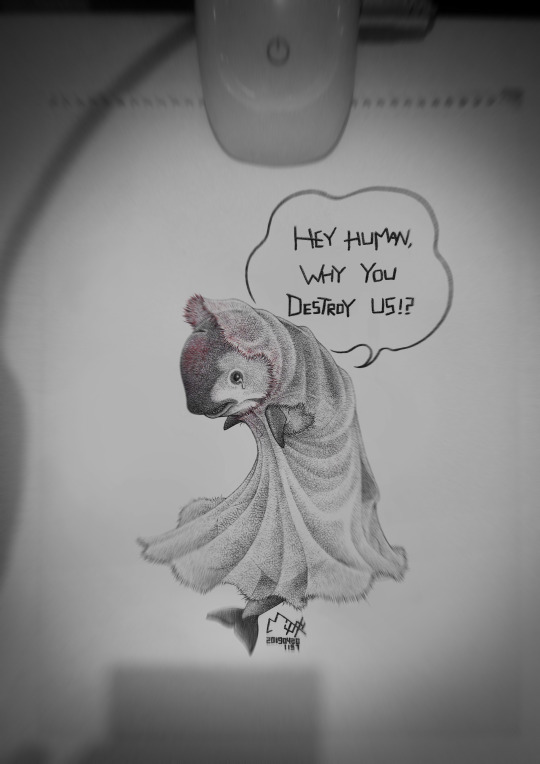
International Save The Vaquita Day
HEY HUMAN, SEE WHAT YOU DO!?
ANIMAN - FISHNET PHOCOENA 魚網豚
Instagram: milkdongcomics
Facebook: Milk DoNg Comics
#International Save The Vaquita Day#鼠海豚#Phocoena Sinus#瀕危#Endangered#剩下約10條#Around 10 Only Left#漁網#Fish Net#非法捕魚#Illegal Fishing#石首魚#Totoaba Macdonaldi#花膠#Fish Tripe#ANIMAN#HEY HUMAN SEE WHAT YOU DO!?#Milk DoNg#Milk DoNg Comics
2 notes
·
View notes
Text
Environmental Watchdogs Accuse Mexican Startup of Violating Trade Laws
Read the latest news about a Mexico-based startup accused of illegally selling a health supplement made from endangered totoaba fish, endangering the vaquita porpoise. Learn why environmental groups are calling for immediate action.
0 notes
Text
THIS FISH IS CALLED TOTOABA MACDONALDI AND IT IS ILLEGAL TO CONSUME DUE TO ITS VULNERABLE STATE IN THE CONSERVATION STATUS
0 notes
Text
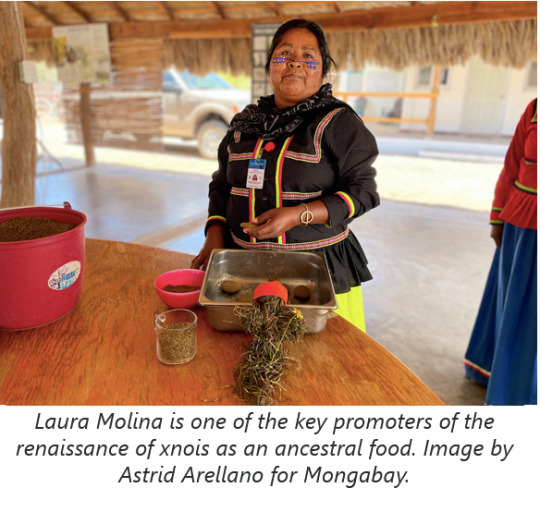

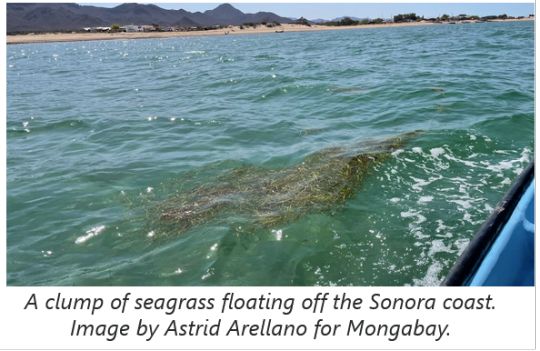

“He was the messenger of a great spirit,” says René Montaño, a Comcaac linguist. [...] Montaño is addressing the entire community at a cultural festival in the Comcaac territory in what is today northwestern Mexico. He talks about how their ancestors learned that xnois (Zostera marina), a type of seagrass also known as eelgrass, could feed their people.
“Zostera marina is paramount for us,” Montaño says. “There are other parts of the world where it barely exists, but here, in this channel, there’s plenty. [...]”
Comcaac [...] fishers learned that it was a food that would give them the necessary strength to survive long ways at sea, and the different ways it could be prepared were passed down from generation to generation. In the past few decades, this knowledge has been largely neglected. Today, the Comcaac people are breathing new life into it.
Comcaac environmentalists Alberto Mellado and Erika Barnett [...] have been developing a study since 2020 [...]. The Infiernillo Channel, located between the Sonora coast and Tiburón Island -- the largest island in Mexico and a sacred site for the Comcaac people -- is a Ramsar site, meaning it’s a wetland of key global importance. It features seagrass meadows, mangrove estuaries, and small patches of coral reefs where various marine species feed. [...] The channel is also home to 81 species of invertebrates endemic to the Gulf of California, and various threatened species, like totoabas (Totoaba macdonaldi) and sea turtles. [...]
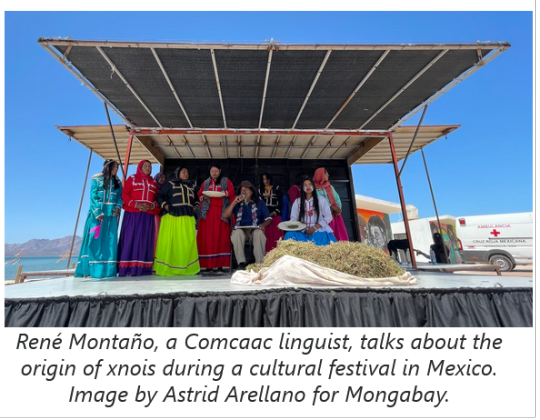


In early 2022, as part of this initiative, the team created an event that brought together chefs and biologists from Sonora, the U.S. and Spain who were interested in the culinary uses of xnois and in the conservation of seagrass. There, the Comcaac cooks shared their knowledge about the ancestral ways of preparing xnois: ground by hand to make flour for tortillas or tostadas, or as a drink made with warm water combined with honey [...]. Newer ways of preparing xnois were also on show, such as in energy bars, hotcakes, and bread in combination with wheat flour. [...]
Today, it’s Comcaac [...] like Laura Molina working to promote the benefits of xnois [...]. In a workshop [...], she flattens small dough balls into tortillas and toasts them over a fire. She says the first time she heard about this ancestral food was from her grandmother. Years later, she asked her mother to teach her how to prepare it. [...]
Erika Barnett says her great-grandparents were probably the last ones in the family to harvest eelgrass for the seeds. She says the fact that her father, now 76, can once again eat food prepared with xnois represents a great success. “The last time he’d eaten it, he was 7 years old,” she says. “Most young people have never tasted it, so this effort is really rescuing our culture.” [...] “The guys and my colleagues didn’t know how to prepare xnois, but I’m happy because we’re teaching them and the kids and adults who want to learn,” Molina says. “This is thanks to our ancestors. [...] [T]hey opened the path that led us here.”
---
Headline, images, captions, and text as published by: Astrid Arellano. “Indigenous Comcaac serve up an oceanic grain to preserve seagrass meadows.” Mongabay. Translated by Maria Angeles Salazar. 3 March 2023. [Photos by Asstrid Arellano. This story was reported by Mongabay’s Latam team and first published on their Latam site on 6 June 2022. Some paragraph breaks added by me.]
542 notes
·
View notes
Text

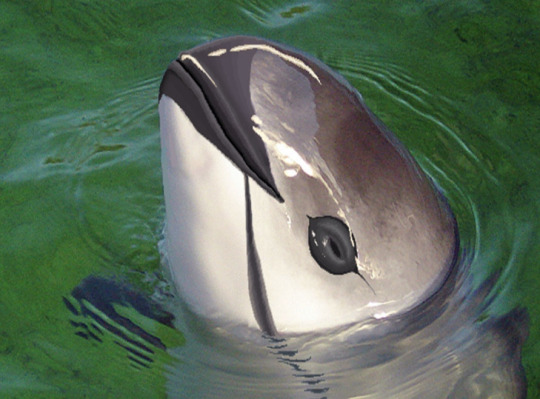


Vaquita - Phocoena sinus endangered species
(not rlly fun facts)
Fun Fact 1 : from 2011 to 2016 alone, 90% of the vaquita population has dropped and now the estimated number for 2023 is 10-13 vaquitas (they live in Mexico). Before this in 1997 there was 600 vaquitas.(;_;)
Fun Fact 2 : A vaquita is a type of porpoise. Porpoises are one of the smallest members of the cetacean familv which includes dolohins and whales. Man species of porpoise are barely studied and most of what we know of them comes from when they are found washed up.
(´;Д;`)
Fun Fact 3 : The vaquita population has been declining because of illegal fishing with gillnets for an endangered fish called totoaba which is wanted for its swim bladder. When gillnets are used many species get caught in it by accident and get tangled while trying to escape, this happens to sea turtles a lot.。゚(゚´Д`゚)゚。
Post dedicated to the Vaquita (srry i didn’t realize i missed a day)
September 12 , 2023 ^ ^
#marine biology#fun facts#ocean life#ocean#marine science#salt water#scientific names#meow#endangered species#endangered animals#vaquita#dolphin#porpoise#sad facts
15 notes
·
View notes
Text

The group of mammals that includes whales, dolphins and porpoises is call Cetacea, and the subject of my recent oil painting is the world’s smallest Cetacean, the Vaquita (Phocoena sinus), little porpoise that, at maturity, is less than five feet long. The Vaquita is found only in the waters at the northern end of the Gulf of California and is critically endangered, down to about ten to twenty individual animals left, as of earlier this year. Its existence as a species was first established in 1958, based on the structure of skulls retrieved from dead individuals found on the beach, but it was only in 1985 that its external appearance was finally described. “Vaquita” means “little cow” in Spanish. No other marine mammal has such a small range.
The main threat to the species is another animal species found only in the Gulf of California, a large drum fish called the Totoaba (Totoaba macdonaldi), itself now an endangered species. I have shown a couple of them in the background. The problem is a demand by an Asian market for the swim bladders and meat of the Totoaba. The nets used to catch the fish caught, entangled drowned the Vaquitas. The bladders are a delicacy in Chinese cuisine, and the bladders are mistakenly credited with treating fertility, circulatory and skin problems. The demand for Totoaba commenced a century ago, after a native Chinese fish, the Chinese Bahaba (Bahaba taipingensis), also known as the Giant Yellow Croaker, as nearly exterminated. It is still critically endangered, with both fish species facing other threats captured by the catch-all rubric, environmental degradation.
A major threat to the north end of the Gulf of California’s marine life is all too well known: the salinity of this region, surrounded by land, has for thousands of years been determined by the flow of fresh water from the once mighty Colorado River, at the “top end” of the sea. But the water of that river, whose force carved the Grand Canyon upriver, and could fill the aquifer behind Hoover Dam, all gets drained off for farming, kitchen taps, golf courses, lawns, gardens, car washes and multiple other human uses before reaching the sea, while at the same time massively unprecedented draught grips the region.
Both Vaquita and Totoaba are protected, and work is underway to commercially raise the latter in fish farms, which potentially carry their own environmental risks. But there is not only poaching, but net captures of other marine life that still threaten both the Vaquita and the Totoaba. The latter has good survival potential but it is extremely frustrating to those of us who care that there seems really to be nothing that can be done to prevent the extinction of the Vaquita at some future point in the current century. It’s far from my best painting; I wanted to convey a sense of tranquility to symbolize the harmonization within nature even with its predatory and competitive nature whereas I perhaps should have tried a more stark or dramatic effect, perhaps the better to reflect my frustrations over my inability to reduce the damage we do to others, other species often unknown to most people, but I felt that at least I should paint its picture, chasing squid in the shallows, an imagined scene based on a reality soon to leave us.
The painting is in oils on compressed hardboard and is 24 by 30 inches in size.
77 notes
·
View notes
Text

El 18 de julio se celebra el Día Internacional de la Vaquita Marina, proclamado por el Programa de Naciones Unidas para el Medioambiente (PNUMA) en su campaña Feroz por la Vida, en el que trata de concienciar sobre la vida silvestre en el planeta.
Dos fechas: 18 de julio y 5 de septiembre
Muchas organizaciones ambientales celebran el Día de la Vaquita Marina el 5 de septiembre, con lo cual ambas fechas son válidas para concienciar al mundo sobre esta especie, ya que todos los esfuerzos son pocos.
La vaquita marina es un pequeño mamífero acuático que prácticamente puede dejar de existir de un momento a otro. Simplemente se deben evaluar las estadísticas.
Para el año 1997 en el mundo había 570 especímenes de vaquitas marinas, para el 2015 solo quedaban 60 y en 2016 solo se contabilizaban 30. Actualmente se cree que el número de vaquitas es de apenas 10 ejemplares.
¿Por qué se aceleró la extinción de la vaquita marina?
En realidad todo se debe a dos factores, el primero son las malas políticas en cuanto a la pesca en México y la segunda, la cantidad de personas que buscan al buche de totoaba.
El totoaba es un pez de 2 metros de longitud que puede llegar a pesar 100 kilos, pero en china se le atribuye propiedades curativas casi milagrosas.
La creencia está tan arraigada, que a este pez se le conoce como la cocaína del mar y cada pescador puede venderlo en 5000 dólares, eso sin contar que el consumidor puede llegar a pagar hasta 100 mil dólares en el mercado asiático.
La pesca del totoaba se realiza con enormes bancos de redes y esta es la razón principal de los decesos de las vaquitas marinas, quienes quedan atrapadas y terminan pereciendo al no poder salir a la superficie a respirar.
youtube
Muchas organizaciones en pro de la naturaleza han ofrecido varias soluciones a este problema. El principal aporte es motivar a los pescadores a utilizar métodos alternativos de pesca, para sustituir los existentes y así evitar la extinción de este pequeño cetáceo.
¿Por qué se debe impedir la extinción de la vaquita marina?
En primer lugar, los seres humanos debemos respetar la vida de todas las especies con las cuales compartimos el planeta, no importa si son animales o plantas o incluso microorganismos, dado que cada criatura sobre la faz de la tierra contribuye de algún modo a mantener el equilibrio natural de las cosas.
En el caso de la vaquita marina, este es el mamífero más grande en la zona del Golfo de California, por lo tanto se trata de un depredador clave que mantiene a raya la población de otras especies y por ende, frena el surgimiento de plagas.
Su muerte puede acarrear grandes pérdidas económicas para las corporaciones pesqueras, pero también puede desatar grandes estragos en el mundo marino, sobre todo en la costa mexicana.
¿Qué hacer para celebrar el Día de la vaquita marina?
Lo mejor que puedes hacer para celebrar este día es unir tu voz a la de millones de personas y exigir al gobierno mexicano que imponga un control más estricto en sus costas para los pescadores.
También, puedes compartir información por las redes sociales sobre la vaquita marina, el peligro que está corriendo y cómo ayudarla, siempre utilizado el hashtag #DíadelaVaquitaMarina #MisionVaquitaMarina #FerozPorLaVida

2 notes
·
View notes
Text
The Rarest Animal in the World: The Vaquita
How rare is the vaquita? There are only 10 left in the world.
The vaquita is a small porpoise found in the waters of Mexico. They weren’t discovered until 1958 and now they’re almost gone. Why? They get tangled in gillnets being used for illegal fishing in the area. The real target is the totoaba, which have a $4,000/pound of swim bladder price. The vaquita are a terrible consequence of…

View On WordPress
3 notes
·
View notes
Text
The vaquita, the world’s smallest whale, is nearing extinction as its habitat is destroyed by Mexican cartels and the Chinese Mafia, who harvest the totoaba fish, the “cocaine of the sea.” Environmental activists, the Mexican navy, and undercover investigators are fighting back against this illegal multimillion-dollar business.
10 notes
·
View notes
Text
Vaquita
Facts

The world's rarest marine animal, the Vaquita, is on the verge of extinction. The fast collapse of the vaquita in Mexico, with only approximately 10 individuals living, exemplifies the condition of cetaceans as a whole—whales, dolphins, and porpoises. This tiny porpoise wasn't spotted until 1958, and now, more than half a century later, we're on the verge of extinction. Vaquitas are frequently trapped and drowned in gillnets employed by illicit fishing activities in Mexico's Gulf of California marine protected areas. In recent years, the population has decreased dramatically.
Website
STATUS: Critically Endangered
POPULATION: About 10 individuals
SCIENTIFIC NAME: Phocoena sinus
HEIGHT: Up to 5 feet
WEIGHT: Up to 120 pounds
HABITATS: Marine (only in the northern Gulf of California)
A wide dark ring surrounds the vaquita's eyes, and dark patches on its lips form a thin line running from the mouth to the pectoral fins. It has a dark gray dorsal surface, pale gray sides, and a white underside with long, light gray patterns on the ventral surface. A wide gray fringe of color runs from the head to the flukes, passing between the dorsal and pectoral fins, and is present in newborn vaquita. They prefer to stay close to shore in the Gulf's shallow waters, but if a boat approaches, they will immediately swim away.

Why They Matter
The vaquita is the world's most endangered cetacean. With only about ten individuals left, the species will become extinct unless a complete gillnet ban is enacted across its entire habitat. The WWF is working hard to guarantee that they can survive and prosper in their natural environment.
Threats
If fishing bycatch is not addressed promptly, the vaquita will become extinct. Nearly one in every five vaquita is entangled in gillnets designed for other marine species, such as the totoaba, a critically endangered fish located in the upper Gulf of California. The principal reason for the vaquita's extinction by the mid-1970s was entanglement in totoaba gillnets. Totoaba were overfished by the mid-1970s, and Mexico and the United States declared them endangered in 1975 and 1979, respectively.

International trade in totoaba is currently prohibited by CITES, a global agreement among states to control or prohibit international trade in threatened species, but rising demand for the swim bladder from China has resulted in an increase in illegal totoaba fishing in recent years. The assumption in Chinese medicine that totoaba swim bladders can heal a range of illnesses and disorders has fueled demand. Thousands of swim bladders are dried and smuggled out of Mexico, frequently through the US. Fishermen receive around $4,000 per pound of totoaba swim bladder, which is roughly half a year's worth of income from legal fishing. The dramatic reduction of vaquita numbers is being driven by this illegal trade.
Website
Patreon Token - Patronize of Animals and Environment
Website: https://patreontoken.com
Get to know the Patreon Token
The Patreon Token is a cryptocurrency created by three pet-friendly crypto fans to create support for the animal welfare and conservation organizations they love, anytime, anywhere. The Patreon Token was created on December 01, 2021. It is made of 88 million pieces and each cryptocurrency can be divided into 8 decimal places.
Our goal
Our team will distribute a minimum of 80 million PTRN tokens to various aid organizations. This means that we want to send 8,000 tokens for free to at least 10,000 animal welfare and conservation organizations, which can be sold to generate revenue. The remaining 8 million tokens will be used to develop to our project. The most important thing for us is that all animal welfare and conservation organizations on the planet can be easily and instantly supported by everyone, wherever they live or stay in the world.
#vaquita#cet#dolphins#whale#ocean#protection#mexico#usa#united states#china#fishing#illegal#nature protection#nature welfare#nature#animal#animals#animal protection#save the environment#environment
14 notes
·
View notes
Text

International Save The Vaquita Day 2023 國際拯救加灣鼠海豚日
HEY HUMAN, SEE WHAT YOU DO!?
ANIMAN - FISHNET PHOCOENA
Instagram: milkdongcomics
Facebook: Milk DoNg Comics
#International Save The Vaquita Day#國際拯救加灣鼠海豚日#鼠海豚#Phocoena Sinus#極危#Critically Endangered#剩下約10條#Around 10 Only Left#漁網#Fish Net#非法捕魚#Illegal Fishing#石首魚#Totoaba Macdonaldi#花膠#Fish Tripe#ANIMAN#HEY HUMAN SEE WHAT YOU DO!?#Milk DoNg#Milk DoNg Comics#Art#Drawing#Sketching#Painting#Illustration#Character Design#Color Pencil
0 notes